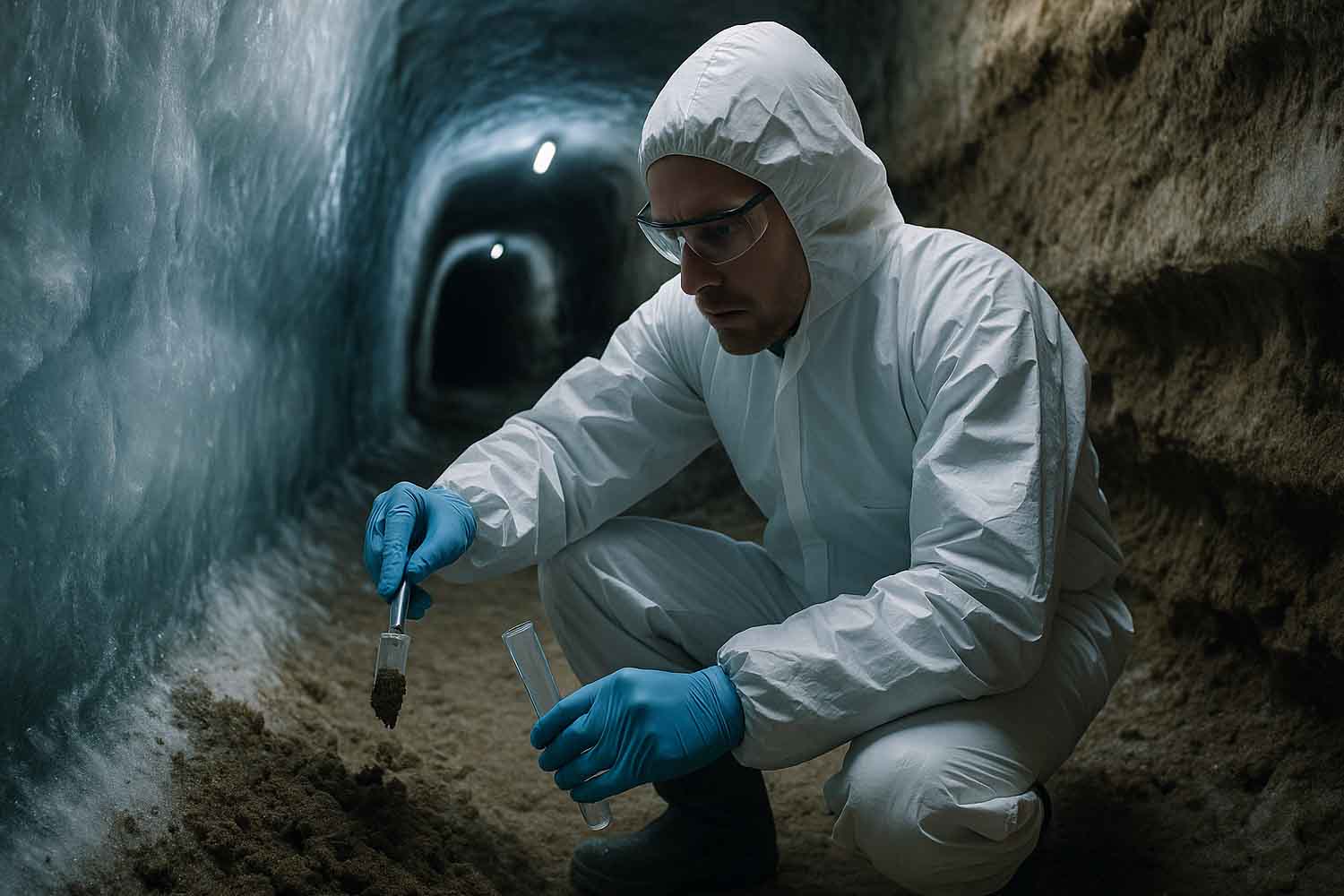An experiment conducted in Alaska brings back to life ancient bacteria that release CO₂: what can happen if permafrost continues to melt?

Beneath the ice of Alaska, 50 feet (15 meters) deep, lies a world that has remained intact for tens of thousands of years. In that frozen subsoil, called permafrost, a team of scientists has identified ancient microbes still alive, though inactive for tens of millennia. Once brought back to the laboratory, these microorganisms “awakened” and began releasing carbon dioxide (CO₂), raising concerns about the possible acceleration of global warming.
The discovery came from researchers at the University of Colorado at Boulder, who worked inside the Permafrost Tunnel Research Facility, near Fairbanks, Alaska. The structure, over 330 feet (100 meters) long, allows for the study of deep layers of frozen soil and preserves sediments dating back to the late Pleistocene, an era spanning from 11,700 to 129,000 years ago.
According to the research team, the first thing you notice when entering the tunnel is a pungent smell, described as similar to that of a damp cellar closed for too long. The scientists explained that this smell is likely related to the presence of decomposing organic material, a sign that microbial life is still present in the ice.
Microbes activated after months in the laboratory: releasing CO₂
During the experiment, researchers collected samples of ancient permafrost, in some cases about 40,000 years old. In the laboratory, those samples were immersed in water containing deuterium, a heavier form of hydrogen. The goal was to simulate the summer thaw conditions that are increasingly reaching even the deep layers of Arctic soil.
The samples were maintained at temperatures between 39 and 54°F (4 and 12°C), corresponding to those that could occur in permafrost during future summers. Researchers monitored biological activity over time, looking for any signs of active metabolism.
In the first months, a slow awakening of the microbes was observed, with an extremely reduced growth rate: they reproduced at a speed of just one new cell per 100,000 per day. But after six months, the situation changed. Some colonies became more active, began to break down the organic matter present in the soil, and started producing carbon dioxide as a metabolic byproduct.
The study results were published in the scientific journal JGR Biogeosciences, and represent a new piece in understanding the effects of global warming on Arctic regions.
Permafrost melting could release enormous amounts of carbon and dormant microbes
The consequences of this discovery were explained by Sebastian Kopf, professor of geological sciences and co-author of the research. According to his statements, today permafrost is melting at an increasingly rapid rate, and this trend could trigger a mechanism that’s difficult to stop.
Scientists believe that, as the ice melts, microbes still present in the soil can reactivate and begin to decompose organic matter preserved for thousands of years. This decomposition releases gases such as CO₂ and methane, two of the most powerful greenhouse gases known.
Kopf emphasized that this is one of the great unknowns of climate change. It’s not yet clear how much carbon is actually stored in permafrost, nor how quickly it will be released into the atmosphere if microbes continue to activate with rising temperatures. The most feared scenario by scientists is that a vicious circle will be generated: global warming melts the ice, the ice releases greenhouse gases, and these gases further increase warming.
For now, it’s certain that permafrost is not just ice: it’s a gigantic archive of organic matter and suspended microbial life, which with rising temperatures could transform into a new source of emissions.
Source: JGR Biogeosciences
